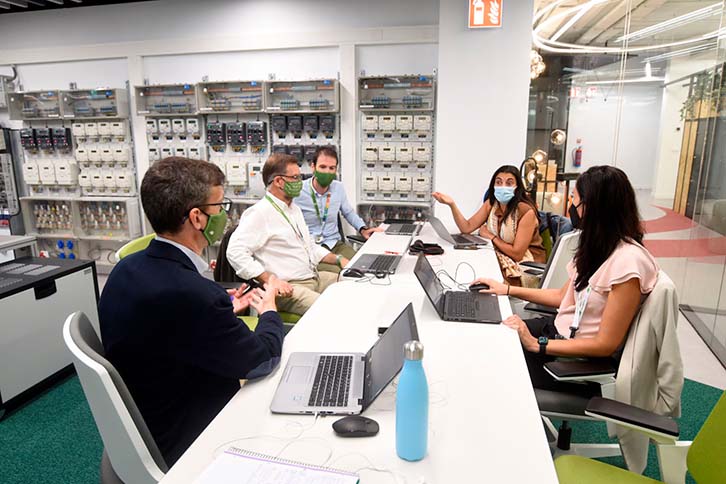News
-
27/04/2022Iberdrola posts €1.05 billion net income in Q1, up 3%, thanks to US, Brazil and other international business areas Iberdrola continues to pursue its strategy, committed to clean energy in order to accelerate the energy transition and the planet’s decarbonization. To this end, the company has invested almost €10 billion over the past 12 months. With more than €2.1 billion invested in the first quarter of the year, with over 90% allocated to smart grids and renewables. Some 80% of the investment was earmarked for international markets, with 32% in the United States, 18% in Brazil, 15% in the United Kingdom and 14% in other international geographic areas. Thanks to investments and the international contribution, net profit grew to €1.05 billion in the first quarter of 2022, up by 3% compared to the same period in 2021. The growth in the international business – 33% in Avangrid and 20% in Neoenergia – offset the adverse result of Iberdrola Spain, which recorded a 29% drop in net profit, to €337 million, due to high energy prices which were not passed on to its customers who has acquire energy at previously agreed fixed prices. With this decline, Spain now accounts for less than a third of the group's total profit. 80% of the energy sold to Iberdrola's liberalised market customers is at prices that are between one-half and one-third lower than the regulated tariff prices. Gross operating profit (Ebitda) increased by 5% in the first quarter of 2022, to €2.95 billion, thanks to the good performance of the United States, Brazil and the international area. By business, the networks area grew by 20% to €1.58 billion, while the energy production and supply business fell by 6.8%, to €1.36 billion, mainly affected by high energy prices, low renewable production and the unscheduled shutdown of the Cofrentes nuclear plant - now resolved -, which forced the purchase of almost 4.5 TWh in the market. Ignacio Galán, Chairman of Iberdrola highlighted that "the current crisis demonstrates the need to accelerate the energy transition to achieve energy self-sufficiency in Europe and decarbonize our economy. To achieve this, solutions based on the European framework and a continuous dialogue between market players and administrations are needed.” Greater commitment to renewables and countries engaged with decarbonization The company has allocated more than €1.12 billion of its first-quarter capital expenditure to renewables. This investment drive has enabled the group to install 3,500 MW new clean capacity in the last 12 months - 1,218 solar PV, 1,136 MW onshore wind, 998 MW hydroelectric and 111 MW of batteries - and to reach 38,300 MW of renewable capacity worldwide. The company currently has 7,500 MW under construction and a project pipeline totaling 90,000 MW. By country, the company has accelerated development in regions with greater climate ambition and more stable regulatory frameworks, such as the United States – with more than 22,100 MW in the pipeline –, the United Kingdom – 15,400 MW – and other international geographic areas – with 24,800 MW – including countries such as Sweden, Germany, Australia, Poland and Japan. One of the group's main growth platforms is the development of offshore wind projects, where it already has 1,258 MW in operation. During the first quarter, the company reached important milestones in offshore wind, such as the planning consent for the 2,900-MW East Anglia Hub in the United Kingdom and the power purchase agreement for the Commonwealth Wind farm (1,232 MW) in Massachusetts, United States, which will involve an investment of €4 billion. Thanks to the new projects, the company will have 7,200 MW of offshore wind power in operation by 2027, of which 2,600 MW are already under construction. Within the networks business, Iberdrola has invested almost €800 million, in line with the group's strategy to increase and reinforce a key infrastructure for the energy transition and the electrification of the economy. The United States and Brazil together contributed 64% of the investment while Spain and the United Kingdom accounted for the remaining 36%. One of the key milestones this quarter was the provisional approval by the British electricity market regulator (Ofgem) for the construction of the 2 gigawatt (GW) power transmission line linking Scotland and the northeast of England, which is expected to come into service in 2027. As part of this investment effort, Iberdrola made purchases from suppliers totaling €12 billion in the last twelve months, which allows it to employ 400,000 people across its global supply chain. In addition, in the last year the company has hired 5,500 new recruits. A resilient business model Iberdrola continued to improve its financial strength in the first quarter thanks to the generation of operating cash flow, which grew by 32% to €3 billion. During the first part of the year, the group once again reaffirmed its leadership in green financing, with €41 billion outstanding under green (€17.9 billion) or sustainable (23.4 billion) formats. In fact, during the first quarter of 2022, Iberdrola reopened the fixed-income Euromarket with a €1 billion green bond issue with a 10-year maturity. This operation allowed it to reinforce its already comfortable liquidity position, closing a large part of the 2022 financing at excellent conditions while reducing market risk due to the evolution of interest rates and credit margins. The group's liquidity currently exceeds €21 billion, covering its financing needs for 22 months. In an inflationary context, the company has 80% of its debt financed at fixed rates. During the results presentation, the Chairman of Iberdrola highlighted the company’s resilient business model in the short and medium term: it is highly diversified – 70% of gross margin comes from the international area –, it has a solid financial structure – 80% of debt is fixed-rate and long-term – and procurement with closed or assured prices for 2022, thus avoiding the current commodity tensions. Net profit guidance maintained Despite the regulatory uncertainty in Spain, Galán reaffirmed profit growth forecast for 2022, thanks to five main factors: the more than 3,800 MW of additional installed capacity planned for this year; the €4 billion investment in networks that will contribute to this year's result; additional growth in the United States and Brazil due to investments; the positive impact of foreign exchange and improved margins of the retail business in the United Kingdom. With these elements, Iberdrola expects to post net profit of between €4 billion and €4.2 billion, which will allow a dividend distribution for 2022 in line with the same, setting a floor of €0.44 per share. The Board of Directors will propose to the Shareholders' Meeting the approval of a final dividend distribution for 2021 of €0.27 per share, in addition to the €0.17 euros per share paid as interim dividend in February. READ MORE
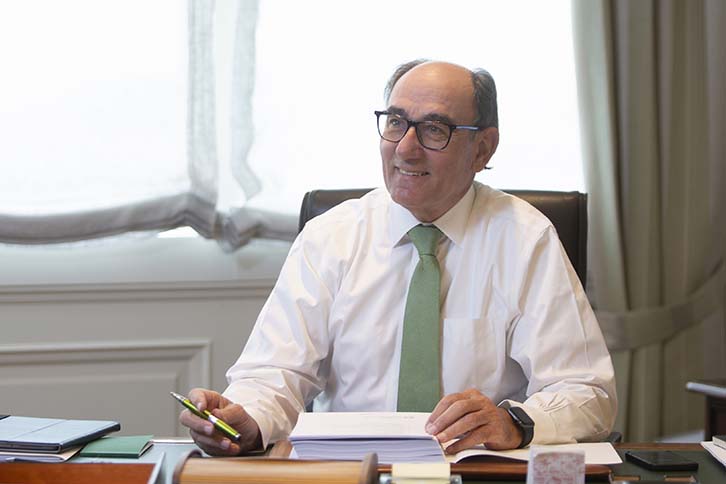
-
26/04/2022Iberdrola signs its largest green loan in the amount of €1 billion with the guarantee of an Export Credit Agency Iberdrola is once again taking a decisive step towards green financing. The company chaired by Ignacio Galán has signed its largest green loan with Banco Santander for an amount of €1 billion, which in turn is backed by an Export Credit Agency (ECA). The loan has a maximum term of 15 years. The funds will be used mainly to finance Iberdrola's orders to suppliers of turbines for offshore and onshore wind farms for Iberdrola's projects in Spain, Poland, Greece, Germany and the UK. Export Credit Agencies (ECAs) exclusively manage credit and investment insurance on behalf of States, covering political, commercial and extraordinary risks associated with internationalisation. The guarantee mechanism for the green loan will be provided by the Export Credit Agency, while the funds for the operation will come from Banco Santander. This green loan will strengthen the diversification of Iberdrola's financing sources. Iberdrola reaffirms its global leadership in green finance With this new loan, Iberdrola continues to consolidate its leadership in ESG financing, with more than €41 billion in signed operations, of which more than €23 billion correspond to green financing and around €18 billion to credit lines, loans or commercial paper programmes subject to compliance with sustainability objectives. The transaction represents the largest green loan signed by Iberdrola to date. The projects to which the resources obtained from these placements are allocated are aligned with the following Sustainable Development Goals (SDGs) of the United Nations, on which Iberdrola focuses its efforts: number 7 - Affordable and Clean Energy - and number 13 - Climate Action. Strong momentum for wind energy Two decades ago, the group was a pioneer in onshore wind power and now it is also a pioneer in offshore wind power . Iberdrola has more than 30,000 MW of operational capacity, in the pipeline and in early-stage developments. Focused on countries with ambitious targets, the company expects to have 12,000 MW of offshore wind energy in operation by 2030 and cumulative investments of over €30 billion worldwide. During 2021, offshore wind energy has established itself as one of the company's major growth vectors. At year-end, Iberdrola had 1,260 MW offshore in operation, 1,800 MW under construction and 5,400 MW in advanced development, which will come into operation before 2027. The company has a portfolio of projects in the United States, the United Kingdom, Poland, Sweden, Ireland, Taiwan, Japan, the Philippines and Brazil, which could increase in the coming years thanks to the numerous tenders in which the company is participating. Potential investments associated with this portfolio of projects, many of which could mature beyond 2030, could be estimated at €90 billion. Banco Santander is the leader in renewable energy financing, with a mobilised volume of €65.7 billion between 2019 and 2021. At the end of the last financial year, Santander was the world's leading bank in renewable energy project finance. READ MORE
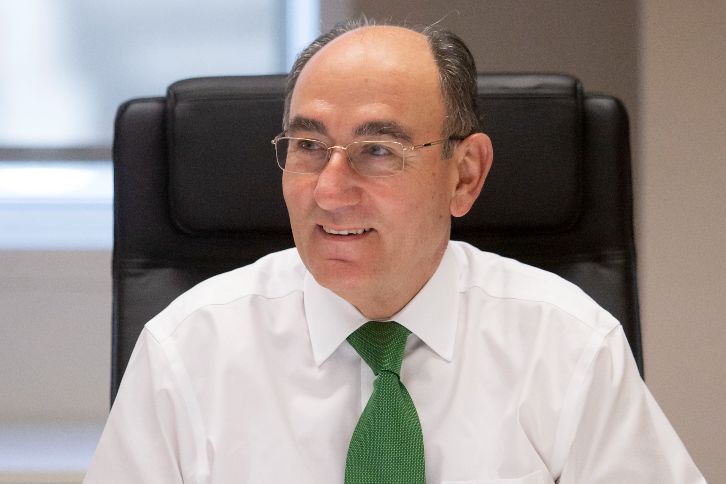
-
25/04/2022Iberdrola starts construction of 476 MW Baltic Eagle offshore wind farm Iberdrola has received the green light to begin construction of the Baltic Eagle offshore wind farm, the company's second major offshore project in the Baltic Sea (Germany). With a capacity of 476 MW, Baltic Eagle will be capable of supplying renewable energy to 475,000 homes and will prevent the emission of more than 800,000 tonnes of CO2 per year. The construction phase starts after obtaining approvals from the German Federal Maritime and Hydrographic Agency (BSH). The wind farm will be fully operational by the end of 2024. Located 30 kilometres northeast of the island of Rügen, off the coast of Pomerania, Baltic Eagle is part of what will be the largest offshore wind complex in the Baltic Sea, with a total installed capacity of more than 1,100 MW and a combined investment of 3.5 billion euros. This hub also includes the Wikinger (350 MW) offshore wind farm, commissioned at the end of 2017, and Windanker (300 MW), which will start operating in 2026. The company has now started work to locate and remove unexploded ordnance from the seabed to ensure the safety of the works while continuing to progress with the production of the foundation components. The Spanish company Windar has already manufactured the first of the 50 transition pieces that the facility will have, which join the wind turbine towers to the foundations. This process will create around 800 jobs and will last until the end of the year. Loading to Germany is scheduled for the beginning of 2023. In addition, Germany's EEW SPC has completed the first monopile at its Rostock plant. With a diameter of around 9 metres, a length of between 75 and 90 metres and a maximum weight of up to 1,402 tonnes, the 50 monopiles in the fleet will be completed in early 2023. The offshore substation is also on schedule and the platform is expected to be delivered this year for installation at the site. This substation is under construction and will be used jointly by Iberdrola and 50Hertz, the transmission system operator in northeast Germany and responsible for connecting the offshore wind farm to the grid. Leader in offshore wind energy Offshore wind energy is one of the keys to Iberdrola's growth. Just as the group was a pioneer in its commitment to onshore wind energy two decades ago, the company is leading the development of offshore wind power. Iberdrola has more than 30,000 MW of operational capacity, in the pipeline and in early-stage developments. Focused on countries with ambitious targets, the group expects to have 12,000 MW of offshore wind energy in operation by 2030 and to achieve cumulative investments of over 30 billion euros worldwide. During 2021, offshore wind energy has established itself as one of the company's major growth vectors. At year-end, Iberdrola had already reached 1,260 MW offshore in operation, 1,800 MW under construction and 5,400 MW in advanced development, which will come into operation before 2027. The company has a portfolio of projects in the United States, the United Kingdom, Poland, Sweden, Ireland, Taiwan, Japan, the Philippines and Brazil, which could increase in the coming years thanks to the numerous auctions in which it is participating. Potential investments associated with this portfolio of projects, many of which could mature beyond 2030, could be estimated at 90 billion euros. READ MORE
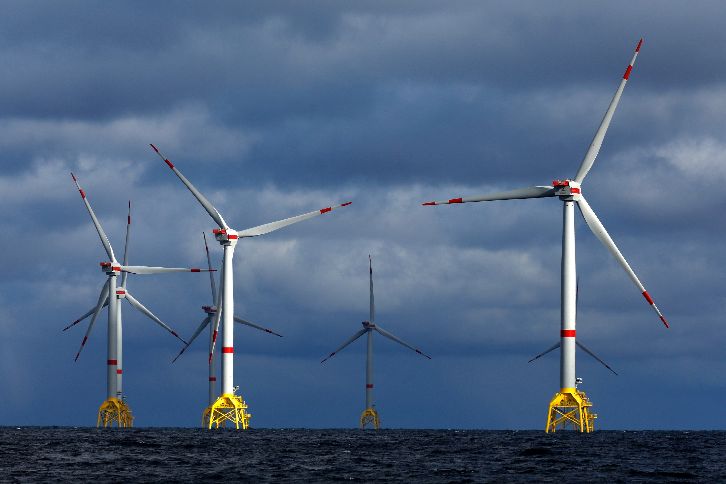
-
22/04/2022Iberdrola seeks innovative companies for early fire detection in protected areas Iberdrola takes another step towards caring for the environment. The energy company, through its PERSEO start-up programme, and in collaboration with the Global Smart Grids Innovation Hub, is looking for solutions that enable the early detection of fires in protected areas near power lines , with the aim of reducing the environmental impact and minimising the repercussions on the continuity of supply to customers. Upon detection of the fire, Iberdrola's Distribution Operation Centre could inform the authorities and the Fire Brigade at an early stage, as well as initiate preventive actions to minimise the impact on customers and disconnect the lines in the area to avoid greater damage. In this way, it also seeks to support environmental organisations with critical information that will enable them to identify the origin of the fire. The challenge will value the incorporation of technologies related to thermal infrared, Internet of Things (IoT), Artificial Intelligence, Computer Vision and real-time satellite imagery, among others. In addition, consideration will be given to the ability to identify the fire over long distances, the maturity, reliability and scalability of the solution, whether hardware or software, the simplicity of installation and maintenance, integration with current monitoring systems, application in other energy assets such as substations, transformer stations and wind farms and the positive impact on some of the Just Transition areas, such as Lada and Velilla del Río Carrión. Firm commitment to the protection and conservation of natural areas Iberdrola has more than 1.1 million kilometres of transmission and distribution power lines in the United States, Brazil, the United Kingdom, and Spain. This network consists of more than 4,400 high to medium voltage substations and more than 1.5 million medium to low voltage distribution transformers, built and operated to provide a high quality and reliable service to a total of 31 million electricity supply points. The areas in which Iberdrola carries out its activities serve as habitats for a variety of wild flora and fauna that, in some cases, are even under some form of protection (Biosphere Reserves, Natura 2000 Network, Natural Park, etc.). In Spain alone, electricity lines cross 19,314 kilometres of protected areas and there are 144 substations, 8,793 transformation centres, 31 reservoirs and 14 wind farms in this type of location. Iberdrola's commitment to the protection and conservation of natural areas is carried out in accordance with its Biodiversity Policy, through its environmental management, action plans, and monitoring of restored and compensated habitats in accordance with the principle of positive conservation. Among other activities, Iberdrola actively fights through the Tree Programme, which will plant more than 20 million trees by 2030, and works preventively at those facilities and assets at risk of suffering incidents due to demand peaks or weather conditions. More than 10 years innovating with start-ups Since its creation in 2008, PERSEO has invested 85 million euros in start-ups that develop innovative technologies and business models, focusing on those that improve the sustainability of the energy sector through further electrification and decarbonisation of the economy. The programme has focused its activities on analysing business opportunities and technological collaboration with start-ups and emerging companies around the world, analysing 300 companies each year and creating an ecosystem of almost 7,000 entrepreneurial companies. This investment instrument currently holds a portfolio of eight companies. Through PERSEO, Iberdrola carries out more than 25 real tests of technologies per year, which serve as a first step towards establishing a business relationship or partnership with start-ups. In addition, in the last two years the group has launched a total of fourteen challenges in which 700 start-ups have participated. Beyond the financial contribution, PERSEO's support to these companies has been key in defining their product and business, offering them its knowledge and access to Iberdrola's market. On the other hand, the work carried out with the start-ups has served our company as a technological antenna to find out where our sector is heading. READ MORE
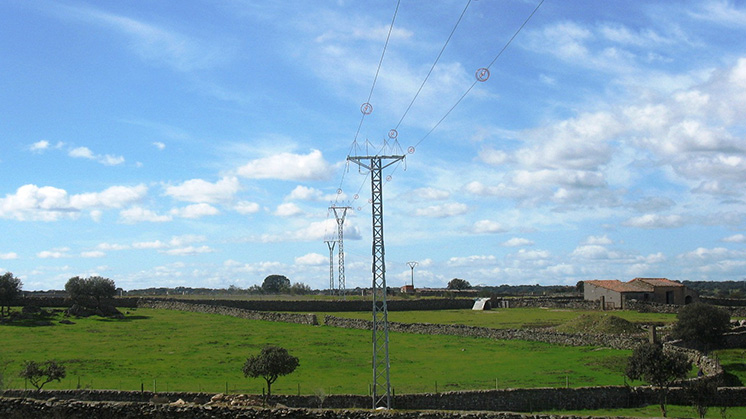
-
20/04/2022Iberdrola acquires world's largest onshore wind farm with 1,000 MW in Australia Iberdrola takes another step forward in its commitment to renewables. The company has acquired the rights to its largest wind farm in the world, with 1,000 MW. The Mount James wind farm is located in North Queensland, Australia, some 80 kilometres north of Hughenden. The agreement marks an important step in Iberdrola's commitment to Queensland. North Queensland has abundant wind and solar resources, large tracts of sparsely populated land and a skilled workforce specialised in the construction and operation of large-scale energy infrastructure projects. For Iberdrola, this region will play an important role in meeting the country's economic decarbonisation target of 50% renewable energy by 2030 and also has the potential to become a major green hydrogen hub and green materials export corridor. As the nearly 25 GW of coal-fired thermal generation is decommissioned and exits the National Electricity Market, significant investment will be required to replace all of this generation capacity. In this context, the Mount James wind project thus becomes one of the key clean energy assets in Iberdrola's growth strategy in the region. Environmental studies have been completed on the 50,000 hectares of the Mount James wind project site, which will allow the wind farm to be designed to avoid environmentally and heritage sensitive areas. In addition, all permits for the construction of the project are being processed. Iberdrola's competitive position in the Australian market is distinguished by a willingness to invest not only in renewable capacity, but also in the technologies that enable clean energy growth, customer-focused product offerings, and broader energy infrastructure. To date, this has been achieved by offering commercial and industrial customers fully firm supply agreements backed by renewable energy generation. Iberdrola, leaders in Australia The Iberdrola group has become one of the leaders in the Australian renewable energy market following the acquisition of Infigen Energy in 2020, now Iberdrola Australia, a vertically integrated renewable energy company with 940 MW of installed capacity. It has also incorporated Avonlie, a 245 MW (dc) photovoltaic project in New South Wales; and has reached Final Investment Decision on major development projects such as Port Augusta Renewable Energy Park (PAREP), a 320 MW hybrid wind/solar plant in South Australia and Avonlie Solar Farm. At the end of last year, it acquired Autonomous Energy , a leading smart solutions company. Iberdrola also has a portfolio of more than 3GW of projects in Australia in various technologies, at different stages of development and located in the states of New South Wales, South Australia and Queensland. As part of its most emblematic projects in the region, Iberdrola is building Port Augusta , in South Australia, its first hybrid wind-solar plant in the world. This is a renewable facility that will combine a 210 MW wind farm with an installed capacity of 210 MW and a 107 MW photovoltaic plant that will generate enough clean energy to supply the annual demand of 180,000 Australian homes. This project will make Iberdrola the market leader in the South Australian region in terms of installed capacity. The company will also sell the energy produced by Port Augusta to industrial customers in the country. READ MORE
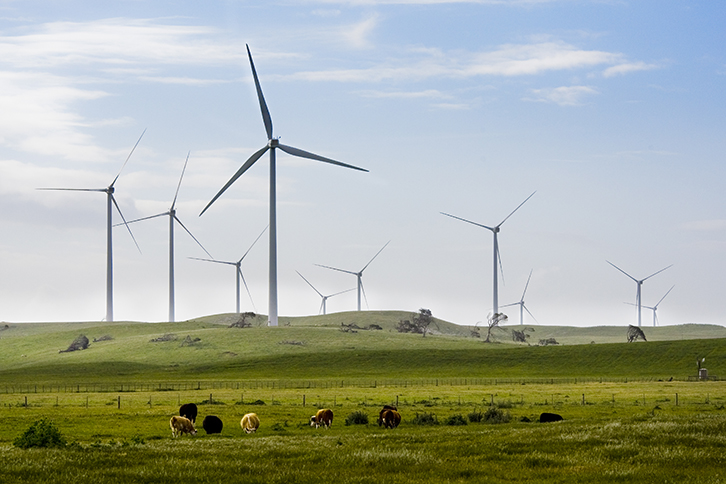
-
20/04/2022Iberdrola announces the purchase of Wallbox's first superfast chargers Iberdrola reaffirms its commitment to promoting innovation in sustainable mobility by becoming the first company to acquire the 'Hypernova' super-fast public chargers developed by Wallbox, the European leader in charging solutions for electric vehicles. The electricity company will acquire the first units as part of an agreement for the purchase of 10,000 chargers. The Chairman of the Iberdrola group, Ignacio Galán, announced this purchase during the inauguration ceremony of the new Wallbox plant in the Zona Franca of Barcelona, which was attended by Reyes Maroto, Minister of Industry, Trade and Tourism; Pere Aragonés, President of the Generalitat de Catalunya; Ada Colau, Mayor of Barcelona; Pere Navarro, Director General of Traffic; and Nuria Marín, President of the Barcelona Provincial Council, as well as the CEO of Wallbox, Enric Asunción. Ignacio Galán highlighted the advantages of collaboration between consolidated business projects and emerging companies. Iberdrola was the first institutional shareholder to back Wallbox in 2019 and is currently its main non-founding shareholder, with 10% of its capital. It was also the first company to acquire its domestic 'Pulsar' and public 'Supernova' charging points, as well as facilitating its international expansion with orders in other countries through its subsidiaries. In total, over the last three years Iberdrola has made purchases from Wallbox worth almost 10 million euros for the acquisition of around 20,000 chargers. "The multiplication of these charging points in our geography is possible thanks to the increased investment in our electricity grids", explained Ignacio Galán. In fact, the Iberdrola group plans to allocate more than €1.5 billion to electricity grids in Spain between 2022 and 2024. In addition, Iberdrola and Wallbox have an agreement to produce, consume and reuse 100% of the energy produced by its plant and offices located in Barcelona's Zona Franca. The electricity company will install a solar self-consumption plant at the Wallbox factory that will produce 1,500 MWh/year, equivalent to the consumption of 500 homes. Potential of the energy transition for industrial transformation The Chairman of Iberdrola also highlighted the alliance between Iberdrola and Wallbox as an example of the "potential of investments in energy transition to transform our industrial fabric and generate quality employment. At Iberdrola, we are proud to know that we support, with our activity and purchases from our suppliers, a total of 80,000 jobs in Spain and 400,000 worldwide". Galán insisted on Iberdrola's commitment to continue "investing in the long term to make this new, cleaner and more self-sufficient energy model a reality. A model aligned with the energy policy and the framework established by the European Union, which is committed to accelerating this unprecedented transformation through stable and incentivising regulation, in order to create progress, wealth and development". The Iberdrola group is participating in the capital of Wallbox through its international start-up programme PERSEO and within the framework of its Sustainable Mobility Plan which, with an investment of €150 million, envisages the installation of around 150,000 high-efficiency charging points in homes and businesses, as well as on urban roads, in cities and on major motorways. PERSEO - which has a fund of €125 million - aims to facilitate the Iberdrola group's access to the technologies of the future and foster the creation and development of a global and dynamic ecosystem of technological and entrepreneurial companies in the electricity sector. READ MORE
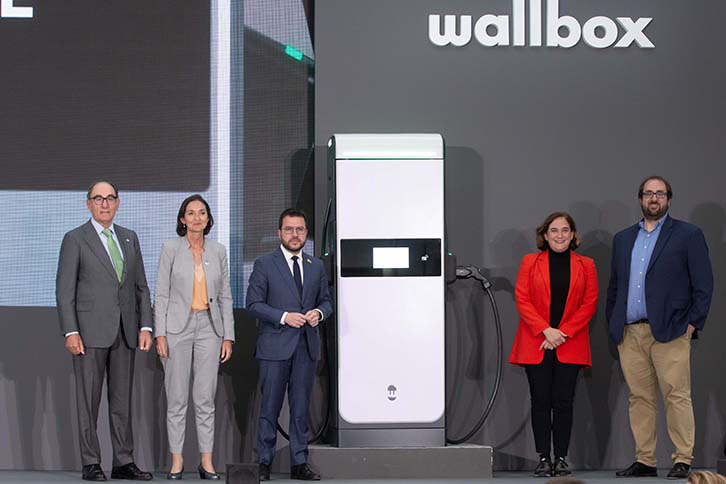
-
20/04/2022Iberdrola gets environmental green light for the development of one of its photovoltaic projects in Salamanca Iberdrola has obtained a favourable Environmental Impact Statement (EIS) for the development of one of its photovoltaic projects in Castilla y León, the Villarino plant , with a capacity of 50 megawatts (MW), located in the Salamanca municipality of Villarino de los Aires. This new solar energy production facility will cover a total area of 280 hectares and will have more than 382,000 photovoltaic modules. It will also generate enough clean energy to supply a population equivalent to 27,000 homes; in addition, it will avoid the emission of 12,000 tonnes of CO2 into the atmosphere per year and will represent an investment of more than €33 million. Its construction will have an important local component, both in terms of industrial suppliers and the involvement of up to 250 workers during peak work periods, until it is put into operation, which is planned for this year, which will contribute to boosting the economy and employment in the area. A world leader in clean energy in Castilla y León With the new plant, Iberdrola will reinforce its commitment to Castilla y León, which is consolidating its position as a major centre for renewable developments in the company's investment cycle to 2025, where it already manages more than 5,100 MW - hydro and wind - making this autonomous community the region with the most 'green' megawatts installed by the company. Also in Salamanca, Iberdrola will invest €200 million to build another photovoltaic plant in Ciudad Rodrigo - 318 MW -, one of the largest installations of its kind in Castilla y León. The company's photovoltaic plant project in Miróbriga will involve industrial suppliers in the area and create up to 800 jobs during peak periods. It will supply 150,000 homes and avoid the emission of 75,000 tCO2 per year. Iberdrola's investment plan in Castilla y León foresees the installation of 1,800 green MW in the coming years, thus advancing in its sustainability strategy, based on the electrification of the economy and oriented towards the fight against climate change and the creation of wealth and employment in the communities where it operates. Iberdrola works on numerous initiatives that combine the installation of renewable projects with the conservation of the biological diversity of ecosystems, caring for flora, fauna and natural heritage. The coexistence of these renewable generation plants with activities related to agriculture, livestock farming and horticulture are further proof of the company's commitment to preserving biodiversity. Green investments to promote economic recovery and employment Iberdrola is convinced that the energy transition can act as a key driving force in the transformation of the industrial fabric and in the green recovery of the economy and employment. In this way, the towns are emerging as a guarantee of the future with numerous initiatives based on 'green' principles that boost their activity and their population. This is the case of these Castilian and Leonese villages, surrounded by 100% renewable energy generation facilities, which join other nearby projects that Iberdrola is promoting and which will contribute to a sustainable recovery from the crisis and create local employment. READ MORE
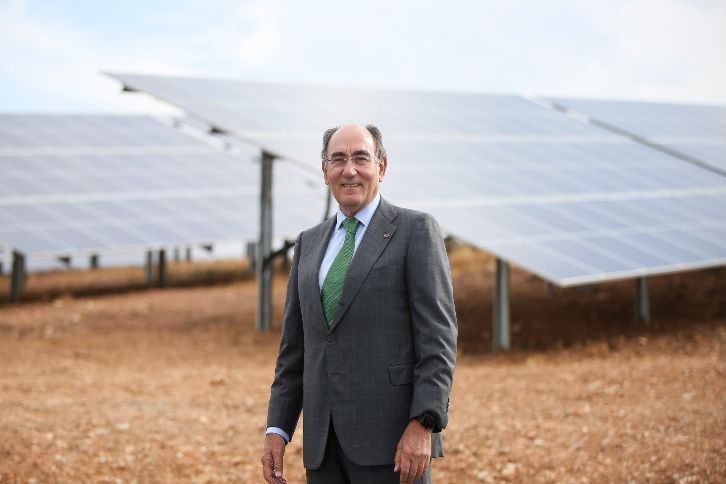
-
18/04/2022Iberdrola's Hub in Bilbao consolidates its position as the world centre for innovation in smart grids Six months after its inauguration, Iberdrola's Global Smart Grids Innovation Hub (GSGIH) in Bilbao is consolidating its position as the world centre for innovation in smart grids. There are already more than 60 collaborating entities and companies for the development of grid digitalisation solutions, integration of renewables, deployment of electric vehicles and energy storage systems. According to Noemí Alonso, director of the Global Smart Grids Innovation Hub in Bilbao, "the work we carry out at the Hub is channelled through three main lines: development of scalable projects in other countries where Iberdrola has a presence as an energy distributor; market-oriented projects in areas such as digitalisation, grid automation and cybersecurity; and the generation and attraction of talent in close collaboration with universities, young entrepreneurs and collaborating companies". Iberdrola invested more than 337 million euros in R&D&I in 2021, 15% more than in 2020. Part of the resources have been directed to projects related to smart grids. It should be noted that among the achievements of the GSGIH in these first months of operation is the identification of R&D&I projects underway for a total estimated investment of 32 million euros in Iberdrola Redes España. "Electricity grids are going to play a fundamental role in the energy transition and in the processes of the electrification of the economy. They are going to have to be transformed in a very profound way, we are going to need grids that are more digital, more flexible and resilient", explained Javier Arriola, director of i-DE's Northern Region. The Iberdrola Hub, which has the collaboration of the Provincial Council of Biscay, is a hub for innovation and open collaboration to develop solutions between manufacturers and startups. In this way, it promotes innovation projects in smart grids that respond to the challenges of smart grids in the coming years. This collaboration is key to the generation of projects in which i-DE and iNET30 technical experts transparently analyse, together with the most active companies in R&D&I, the needs of the Business in order to prioritise the lines of work in the new technologies available. In the same way, the challenges proposed by the Hub stimulate the development of possible solutions, thanks to the startups. At the moment, there are already 4 International Challenges launched from the GSGIH with the focus on attracting startups. The Hub's growth pole This public-private collaboration space -with more than 1,000 m2 and located at Iberdrola's network headquarters in Larraskitu- is a pole of attraction for talent and the promotion of new technologies that will make the energy transition possible, maximising the use of renewables, fully integrating energy storage systems and optimising access to new uses of electricity, such as mobility and air conditioning. Moreover, it is also an international collaborative project, bringing together the potential of more than 200 professionals in the development of innovation projects to be developed in countries in Europe, America and the Middle East. The Global Smart Grids Innovation Hub also promotes knowledge transfer through scholarships and postgraduate degrees; serves as a catalyst for business development through startup incubation and acceleration programmes; and active competitive intelligence actions, such as the design of global conferences. Another focus of action revolves around the connected worker and the robotisation of operations, with the aim of making use of sensorised equipment to receive real-time information on risks. It also uses terrestrial and aerial robots (drones) to perform operations remotely, avoiding travel and working more safely and efficiently. The Global Smart Grids Innovation Hub is connected to the Biscay Startup Bay strategy, as it will also become a scaleup location for startups in the energy sector that set up in the Biscay Tower. READ MORE
